As we previously have noted in our study of the Conical Asian Hat of the Hong Kong Police, this unique version of the sun helmet – known as the “rice hat,” “paddy hat,” or even pejoratively as the “coolie hat” – was one that had been primarily used by civilians. However, in many cases the line between “civilian” and “military” is blurred, especially in times of insurrections and uprisings. In these cases the conical hat, used as much by so-called peasants in the fields, became a headgear of war.
It was also, as the above photo suggests, a form of true military headgear – with the French and British relying on the conical straw hat for use by indigenous troops in South East Asia and China. The above photo shows French Marine Infantry volunteers in French Indo-China circa 1935.
The conical hat was likely relegated to the parade ground and there is no photographic evidence that the French colonial forces used the conical hat in combat after the First World War. 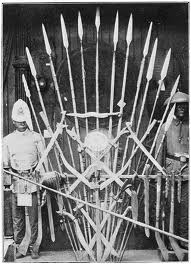
Conical hats appeared in many styles and variations, and had other names. It was known as the “salacot” in the Philippines, and these farmer hats were used by the Moro. According to Frederic H. Sawyer’s book The Inhabitants of the Philippines, “The salacots, or native hats, are beautifully woven by hand from narrow strips of a cane called nito [lygodium], and the headmen have them ornamented with many pieces of repoussé silver.”
The illustration to the left shows an example of such as “salacot” with the warrior on the right (Photo: Sawyer).
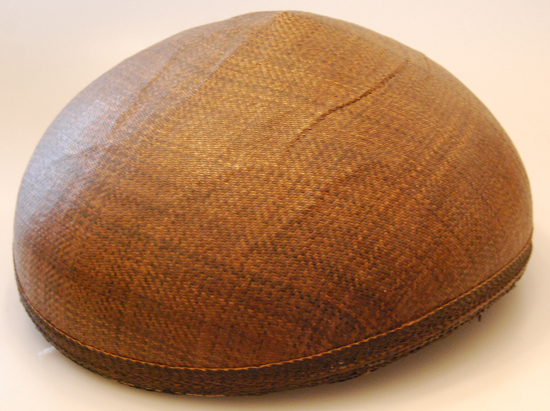
A Spanish-American War era Salacot that shows a unique curve in the shape of the Moro headgear (Collection of the author).
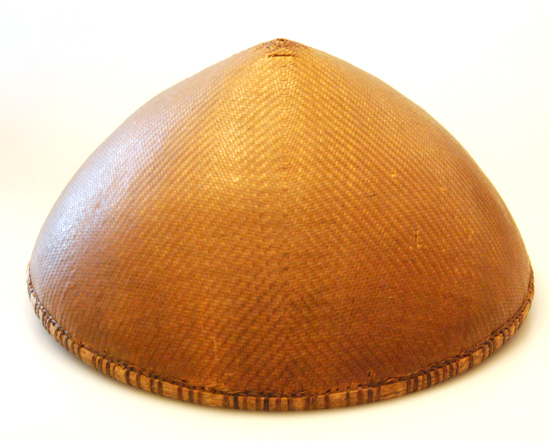
Another fine surviving example of an early 20th century Filipino Salacot. This example is nearly symmetrical (Author’s collection).
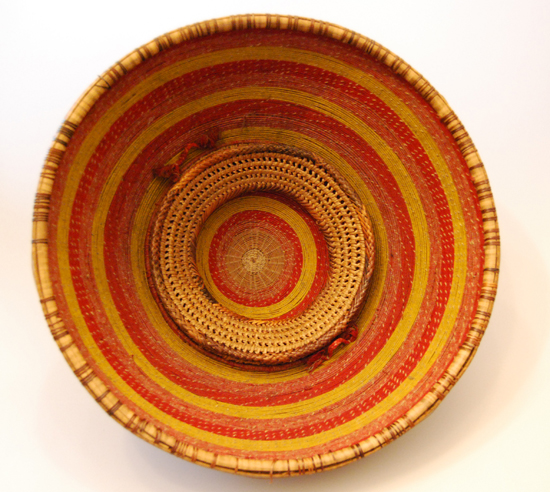
The inside of the above Salacot, which shows the attention to detail. These were far more than simple “straw hats.” (Collection of the author)
Throughout Asia, from China in the north to Indonesia in the south, Burma in the west to the Philippines, the conical hat was widely used. It was often made of local materials, and seemed to be an ideal hat for protecting the wearer from the sun as well as the rain. While numerous examples were brought back as “war souvenirs” from Vietnam in particular, apart from movies and TV shows, there is little evidence that the conical hat was widely used by Viet Cong forces, at least in combat.
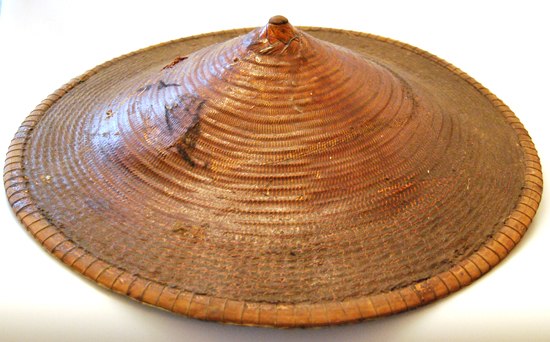
A South East Asian conical straw hat. This style is believed to have been used in Indonesia. It is well constructed but when it was used is unknown (Author’s Collection)
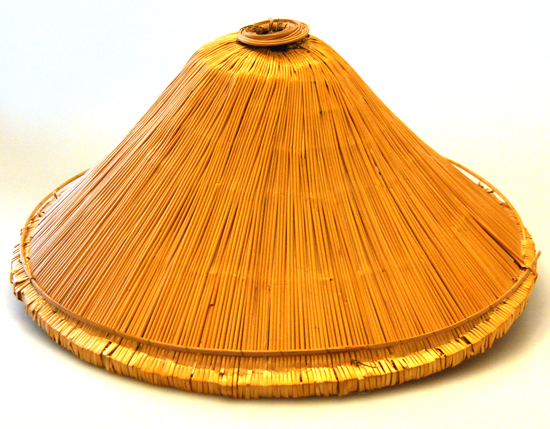
An example that is of the correct style as those seen in use during the Vietnam War. This example sits low on the head, and features two strip chinstraps to help it remain on the head. This type of hat was used in some numbers by the Viet Cong but often covered with some form of camouflage covering (Collection of the Author).
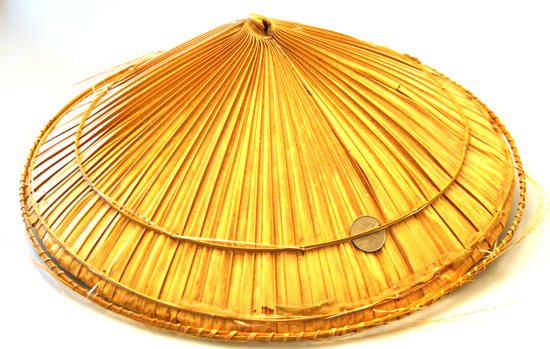
Another example that reportedly came from Vietnam. This example features a war-time dated coin tucked into the wicker (Collection of the Author).
In fact, given that the hat largely sits on the wearer’s head – thus making it ideal for someone doing work in the fields – it is impractical for soldiers on a battlefield. However, the conical hat did inspire a particular type of military helmet, namely the late Edo/Bakumatsu “Jingasa Helmet” that was used by the warring Japanese samurai armies.
Unlike other samurai helmets or even the swords, the Jingasa helmets were not limited to use by true samurai. This helmet, which is made of lacquered metal in the shape of the conical hat, was widely used most notably by the Aizu rifle corps.

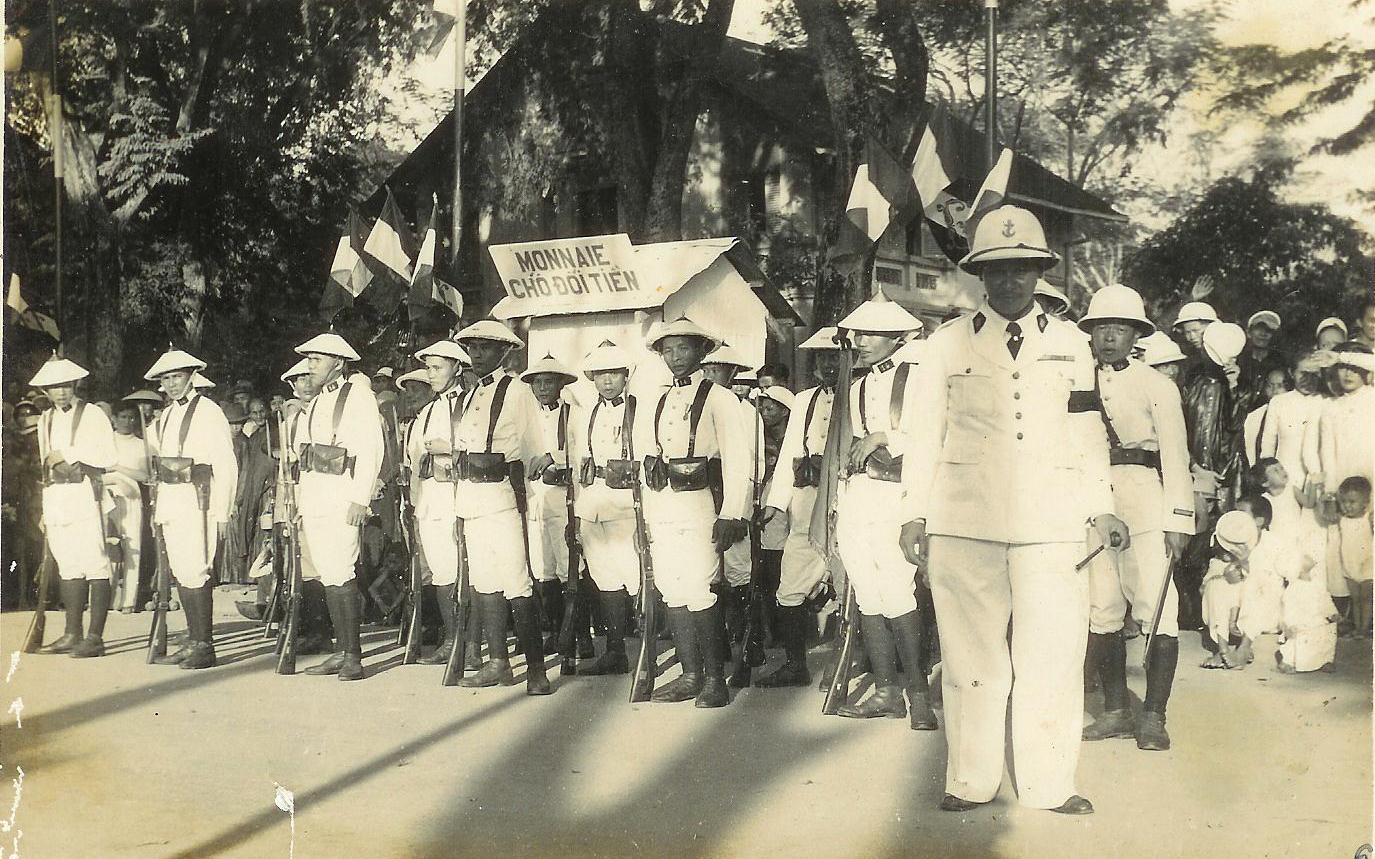
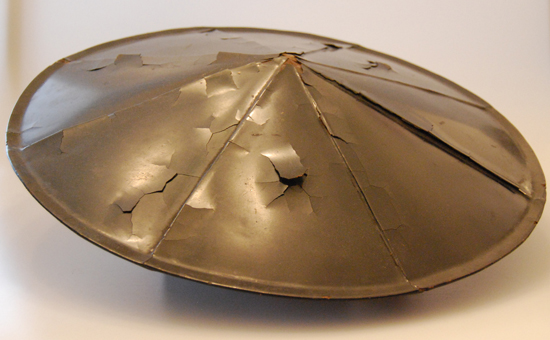
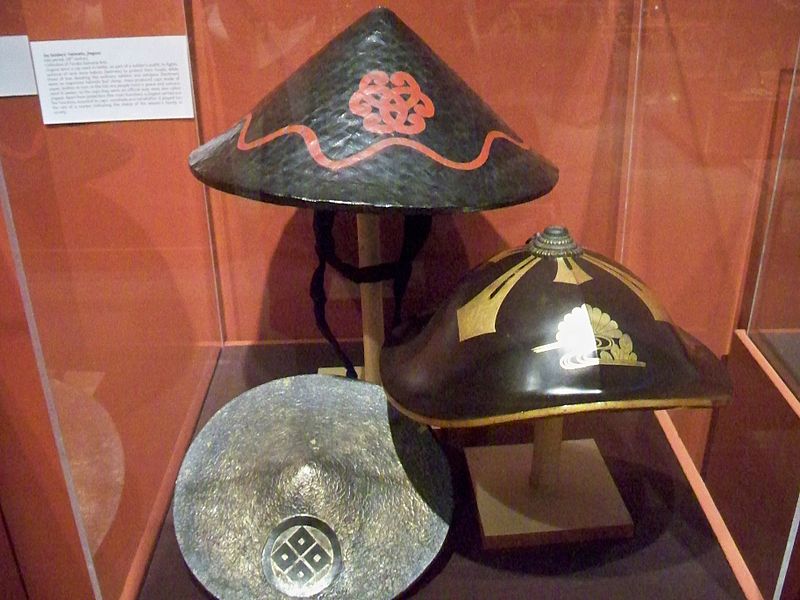
The conical hat of south east asia… is its construction method available? Any other pictures of it would be greatly appreciated.
I own one made from a large goard.